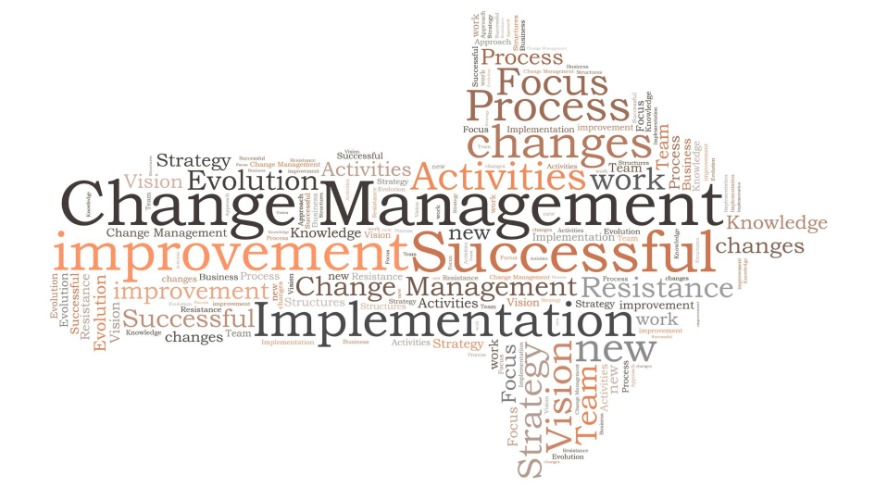When leadership passes from one generation to the next, the emotional and cultural layers of the organisation are inevitably disturbed. Founders and long-tenured leaders embody values that have guided the business for years. Their successors must honour that legacy while making their own mark. Without careful management, this moment can create uncertainty, division or even regression.
Culture, however, can also be the engine of renewal. When handled deliberately, succession is an opportunity to refresh shared purpose, modernise ways of working and set a tone for the next era.
At AIMS International we encourage clients to treat succession as a strategic change programme, one that aligns governance, people and culture around a shared vision of the future.
Turning succession into sustained change
Succession is not a date on a calendar; it’s a journey that requires people to let go, adapt and embrace something new. Legal and structural plans may transfer authority, but only effective change management embeds it.
From my experience working with family businesses, I have observed that when leadership teams treat succession as a managed change process rather than a series of transactions, they preserve both continuity and credibility. The most successful transitions are those that combine sound governance with intentional cultural renewal.
Understanding where resistance sits
Behind every transition are people navigating uncertainty about their roles, their influence and the future of the business. Using proven diagnostic tools from leading global research firms and drawing on AIMS’s consulting engagements, I begin with assessing readiness. Which groups understand why the change is needed? Which are reluctant? Where do gaps lie in expectations or in competencies?
These insights allow targeted interventions that build alignment and commitment across generations and management layers.
Building the system for change
Change thrives on structure. The most resilient organisations establish guiding coalitions that blend experience and innovation, for example, pairing an independent board member with a respected family representative to lead the process. A clear vision, open communication, and visible early wins help to demonstrate that the transition is not only planned but already delivering results. It’s a practical way to build momentum and trust during a potentially delicate handover.
In one case I oversaw, we created a small transitional leadership council incorporating non-family senior executives; their role was to review decisions jointly during the overlap period. That visible shared decision-making-built confidence in the successor without undermining the predecessor.

Embedding the right behaviours and culture
Culture is the invisible architecture of any organisation. During succession, it must evolve without losing its essence. Modern behavioural science tells us that people rarely change because they are told to, they change because leaders model the new way and because systems reward it. The organisations that thrive after succession are those that intentionally align leadership behaviour, performance measures and decision rights to the culture they want to sustain.
At AIMS I often work with clients to redesign their performance evaluation frameworks so that behaviours aligned with the new leadership style are explicitly recognised. For example, we introduce criteria such as adaptive leadership, mentoring of younger staff, signalling long-term orientation. When rewards and recognition align with these behaviours change is more likely to stick.
A phased approach that fits real business rhythms
True succession takes time. While the legal and financial work may close within weeks, human transition moves more slowly. We typically see successful programmes unfold over six to twelve months, following four broad phases:
Diagnostic: Understand current readiness, cultural strengths and potential points of resistance.
Design: Clarify the shared vision for the next era, formalise roles, and align governance and HR processes.
Pilot & early wins: Test new leadership routines, demonstrate progress, and communicate success stories.
Scale & embed: Institutionalise new decision-making norms, update governance documents, and reinforce the desired culture through recognition and accountability.
This sequence allows space for both emotional adjustment and operational continuity, a balance too often overlooked. In one engagement, for instance, the pilot phase included letting the successor lead a major client renewal while the predecessor remained heavily involved in the relationships. That win became symbolic, enabling the wider team to accept the successor’s legitimacy.
Leadership, symbolism and sponsorship
Transitions are remembered as much for what people see as for what they read. The outgoing leader’s public endorsement of the successor, shared decision-making in early months, and symbolic gestures such as a joint client visit or co-authored announcement can build confidence inside and outside the organisation.
Independent board members and trusted advisers also play a crucial role here. Their neutrality lends credibility, while their guidance helps moderate the emotions that often accompany succession discussions.
In my experience the value of sponsorship cannot be overstated. I have worked with firms where the predecessor intentionally steps back in certain areas but remains visible as mentor, in others where the successor and predecessor appear together in public forums early on. Such symbolism reassures employees, investors and clients alike.
Communication that connects head and heart
In every successful handover, communication is deliberate, authentic and frequent. It is not about grand speeches but about creating genuine dialogue:
Explaining the “why” behind the transition.
Clarifying what continuity will remain and what will change.
Recognising contributions of the past while signalling readiness for the future.
Research shows that when leaders communicate early, often, and personally, employee engagement and trust rise significantly, even during uncertain periods.
Common pitfalls and how to avoid them
Treating succession as a legal transaction. Outcome: poor employee morale and talent flight. Remedy: run parallel people-and-culture streams and measure their progress.
Underestimating invisible stakeholders. Outcome: informal influencers sabotage change. Remedy: map and engage influencers; secure visible sponsorship.
Neglecting the successor’s development. Outcome: skill gap and loss of credibility. Remedy: create a 12–24-month development plan that includes stretch roles, coaching and board exposure.
The role of external advisers and independent directors
External advisers (HR specialists, change practitioners, family business consultants, legal and financial advisers) add expertise and impartiality but only when they build internal capability rather than replace it. Independent directors play a unique role as neutral sponsors and credibility builders during the transition; many successful succession cases feature independent directors who mediate family tensions and support the guiding coalition. In one engagement I observed that the independent non-executive director became a trusted mediator between predecessor and successor, reducing friction and accelerating decision making.
Measuring what matters
Just as governance and finance have clear metrics, so too should the cultural and change dimensions of succession.
Meaningful indicators might include:
Levels of stakeholder confidence in the new leadership.
Retention of key talent through and beyond the transition.
Speed and quality of decision-making under the new structure.
Evidence that the desired behaviours are being modelled and rewarded.
These measures not only track progress but also signal that culture and people are taken as seriously as profit and compliance.
Looking ahead
Succession done well is not simply a change of nameplates but it’s the careful renewal of purpose and culture. It’s the difference between continuity that drifts and continuity that inspires.
By bringing proven change-management thinking together with the deep human understanding that defines our work at AIMS International, we help organisations ensure that leadership transition becomes a catalyst for growth, not a moment of uncertainty.
If your organisation is preparing for succession, or already navigating the process, our consultants can help you translate intent into impact and guiding you through diagnostics, culture alignment, and leadership development that make change last.
Additional perspective on change management from my experience
From my time leading AIMS International, I have found that the following three practices make a real difference in ensuring succession with cultural change sticks.
Invest in middle leadership early
In many firms the successor is visible, but middle managers bear the burden of daily change. They interpret, relay and often translate what strategy means in practice. If they are uncertain or sceptical the transition fails at the coalface. I have spent weeks with management teams coaching middle leaders in alignment, conflict management and future-orientation. These middle managers become change ambassadors.Use small pilots not all-or-nothing launches
Rather than switching everything at once I help clients run small pilots: successor takes ownership of a product line, or leads a major client renewal, or handles a strategic initiative. These early wins matter hugely. They reduce perceived risk and show others what the future feels like in practice.Maintain dual leadership overlap
When predecessor and successor overlap appropriately (not by years, but with structured shared roles) the successor builds credibility, and the predecessor can manage stakeholder perceptions. I have seen overlap phases of three to six months work well: they build trust externally and internally, allow for skill transfer, and help embed new working norms.Measure and adjust continuously
I never assume a plan will proceed exactly as envisioned. We build in checkpoints – typically monthly reviews of cultural and behavioural metrics, feedback from staff, and adjustments. If something is not working (for instance the successor is perceived as distancing rather than evolving) we adapt quickly.
“A new generation can inherit the assets, but only shared values and trust can sustain the legacy. Culture and change management make the handover not just successful, but lasting." — Louise Vella, Managing Partner @ AIMS International Malta
This article is part of a six-part series on Succession Planning, created to help family businesses plan confidently for leadership transitions. Look out for the next piece in the series.
Sources and Further Reading
Harvard Business Review. Plan a Smooth Succession for Your Family Business. Harvard Business Review.
Kotter Inc. The 8-Step Process for Leading Change. Kotter (methodology overview).
Harvard Division of Continuing Education (Harvard Professional Development). 7 Reasons Why Change Management Strategies Fail and How to Avoid Them. (blog).
McKinsey & Company. Culture & Change (People & Organizational Performance). McKinsey insights.
McKinsey. Five bold moves to quickly transform your organisation’s culture.
Harvard Business Review. The Most Successful Approaches to Leading Organizational Change.
HarvardBusiness.org. Readiness Reimagined: How to Build a Change-Seeking Culture.
Harvard Business Review. Leading Change: Why Transformation Efforts Fail (John Kotter).
About the Author
Louise is a seasoned professional with over 25 years of experience in the Corporate Services Provider (CSP) industry. She has supported a wide spectrum of clients—including those from the corporate, private, and public sectors, as well as entrepreneurs—across various aspects of company secretarial work, corporate governance, trustee, directorship services and risk management.
How Can I Help You Preserve Your Family Legacy?
Unlike larger corporations that adhere to clearly defined pathways guided by EU directives and governance frameworks, family businesses often navigate intricate routes shaped by tradition, emotional considerations, and close personal relationships. Consequently, succession planning represents one of the most formidable challenges that any family business will encounter.
I'm happy to share insights and provide you with a solution that meets the specific needs of your family business.
Disclaimer: This article provides general information on succession planning in Malta and business owners should seek professional advice tailored to their specific circumstances before implementing any succession arrangements.

